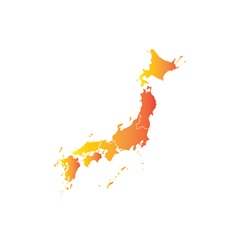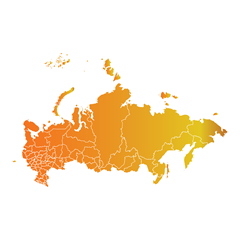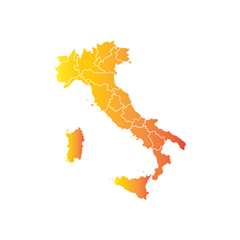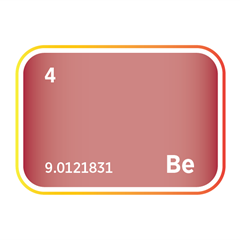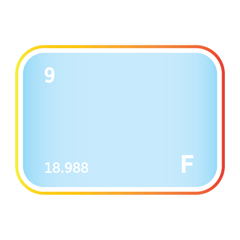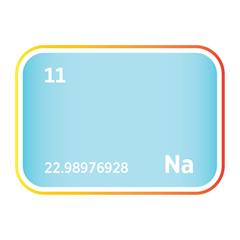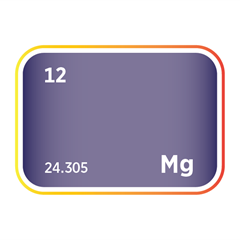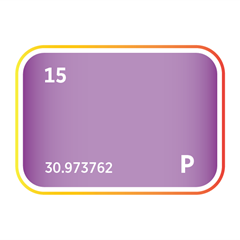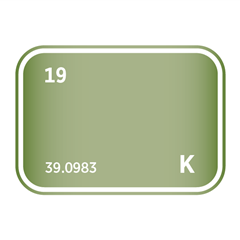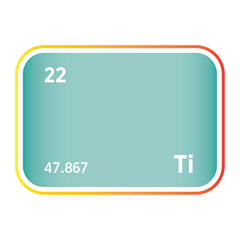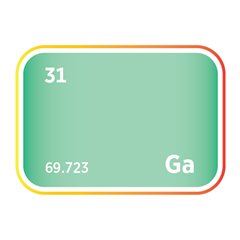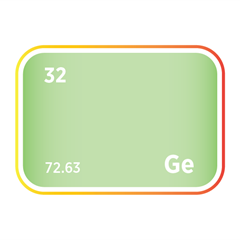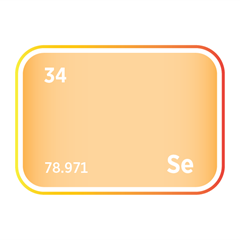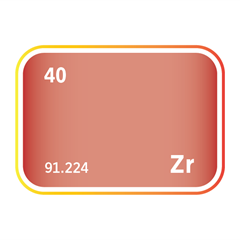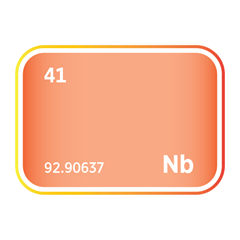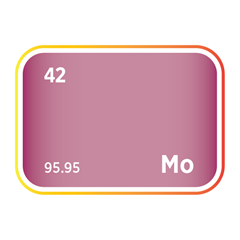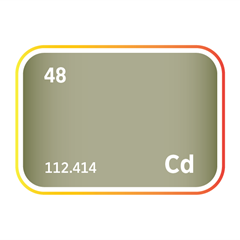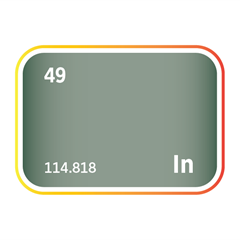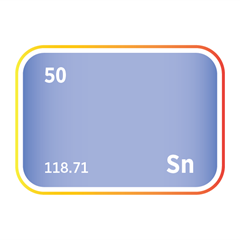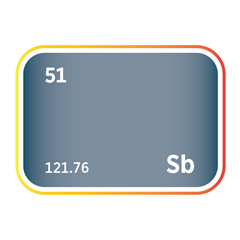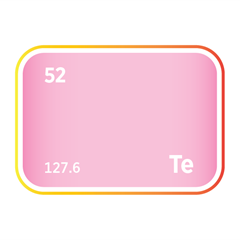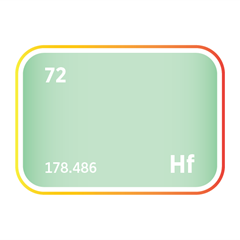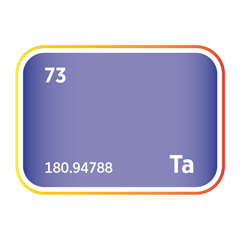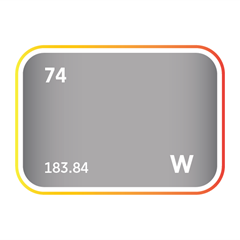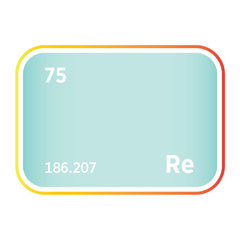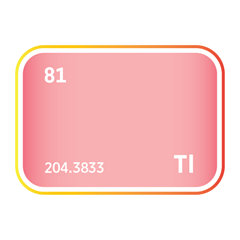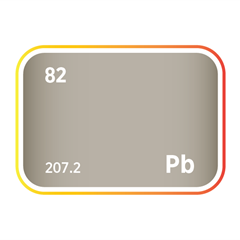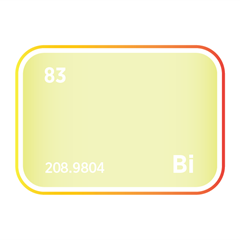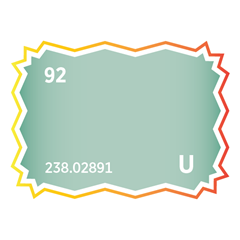Indium
Critical Minerals and The Energy Transition
Navigating the Indium Market
With its soft, ductile nature and lustrous silver hue, Indium plays an essential role in the cutting-edge sectors of technology and materials science. This rare metal, mainly derived as a byproduct from zinc ore refinement, boasts distinctive qualities such as outstanding electrical conductivity, stability across broad temperature ranges, and the ability to create thin, transparent conductive films. These attributes have catapulted indium into the spotlight, especially for its critical application in crafting indium tin oxide (ITO) coatings found in a vast array of electronic displays, from smartphones and tablets to solar panels, where it facilitates essential transparent conductive layers. Amidst increasing demands fueled by the surge in electronics consumption, renewable energy pursuits, and advancements in display technology, indium's market faces the dual challenges of limited availability and the complexities of sustainable extraction. The escalating reliance on technology and a global pivot towards greener practices highlight indium's pivotal role, prompting a closer examination of recycling methods, ethical sourcing, and the development of viable alternatives. This delicate balance between innovation, resource management, and environmental stewardship accentuates the critical need for sustainable strategies in utilizing indium, ensuring its continued contribution to technological progress without compromising ecological integrity.
An introduction to indium
Indium demand and end-uses
Indium is a soft, silvery-white post-transition metal with exceptional properties that make it indispensable in modern electronics, optoelectronics, and clean energy technologies. Although produced in relatively small quantities, indium plays a disproportionately large role in enabling flat-panel displays, touchscreens, photovoltaic cells, semiconductors, and emerging flexible electronics. Its scarcity and lack of viable substitutes in many applications give indium strategic significance in high-tech supply chains.
The single most extensive use of indium is in the form of indium tin oxide (ITO). This transparent and electrically conductive material is critical for producing liquid crystal displays (LCDs), touchscreens, plasma panels, and electroluminescent lighting. ITO is applied as a thin film to glass or plastic surfaces, enabling electrical conductivity without compromising optical clarity. As smartphones, tablets, laptops, televisions, and industrial displays proliferate, ITO remains essential to the consumer electronics and display industries. Although efforts are underway to reduce indium loading or develop alternative transparent conductors, no substitute currently matches ITO's combined transparency and conductivity at a commercial scale.
Indium is a key component in copper indium gallium selenide (CIGS) thin-film solar cells in the photovoltaic sector. CIGS technology offers high efficiency and flexibility, making it suitable for building-integrated photovoltaics, portable solar panels, and space-based solar systems. Although silicon-based photovoltaics dominate the market, CIGS cells are gaining traction in applications requiring lightweight or non-rigid formats. Growth in decentralised and mobile solar solutions may support further demand for indium in this space.
Indium is also used in semiconductors, particularly in producing compound semiconductors such as indium phosphide (InP) and indium antimonide (InSb). These materials are used in high-frequency, high-speed electronics, including 5G infrastructure, laser diodes, infrared detectors, and photonic integrated circuits. InP is essential in telecommunications and data centres, enabling high-bandwidth optical data transmission. As demand for connectivity and data processing accelerates, indium’s role in enabling next-generation electronic components will likely grow.
In soldering and thermal management, indium is valued for its low melting point, ductility, and ability to wet non-metallic surfaces. Indium-based solders are used in precision electronics, aerospace systems, cryogenic equipment, and medical devices, particularly where flexibility, strength, or conductivity under thermal stress is required. Indium compounds are also used in thermal interface materials to improve heat dissipation in high-performance computing and power electronics.
Other niche applications include nuclear control rods, bearing lubricants, coatings for aircraft engines, and research catalysts. Indium alloys and indium oxide are used in high-performance coatings, while indium’s corrosion resistance and reflectivity support specialised uses in mirrors, low-friction surfaces, and vacuum technologies.
Looking ahead, indium demand is expected to grow, particularly due to rising consumption of displays, touchscreens, optical communications, and CIGS solar technologies. However, supply limitations, price volatility, and geopolitical risk may constrain availability. This has prompted ongoing research into ITO alternatives such as graphene, carbon nanotubes, and conductive polymers, as well as efforts to reduce indium content through nanostructuring and new deposition techniques.
Indium’s unique combination of electrical conductivity, optical transparency, and semiconductor performance ensures it remains a critical material for the digital and energy transition. From consumer electronics to advanced photonics, indium underpins technologies central to global connectivity, sustainability, and innovation. As demand rises and supply constraints persist, securing indium through recycling, substitution, and responsible sourcing will be essential to maintaining resilience in future-facing industries.
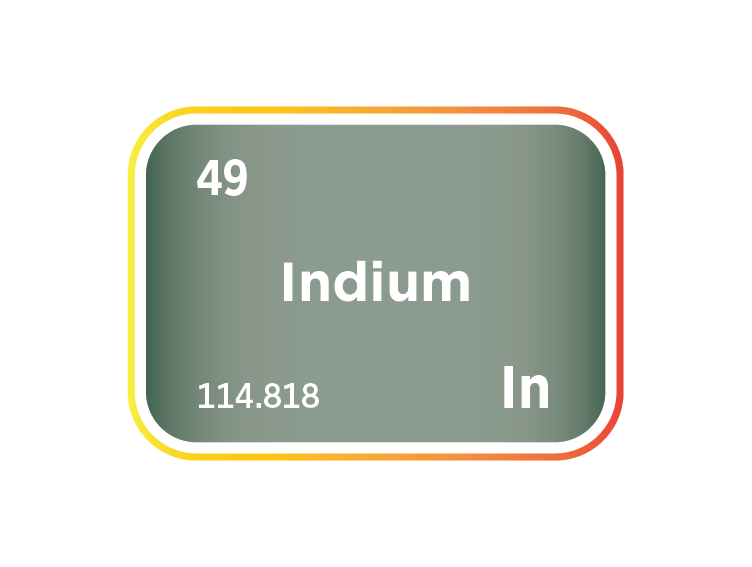
Indium supply
Indium is not mined as a primary metal but is recovered as a by-product of zinc ore processing, particularly from sphalerite (zinc sulphide) concentrates. Sphalerite often contains trace amounts of indium, which substitutes for zinc in the crystal lattice due to their similar ionic radii. During zinc smelting, indium accumulates in residues, flue dusts, or slags and is subsequently extracted using hydrometallurgical techniques. In some cases, chalcopyrite (copper iron sulphide) and stannite (tin sulphide) ores may also contain indium, though these are much less significant as commercial sources. As such, indium supply is tightly coupled to the zinc industry’s economics, production volumes, and metallurgical practices, rather than direct market demand for indium itself.
China is the dominant producer, accounting for most global indium output and refining capacity. This centralisation raises long-standing concerns about strategic dependency and potential supply disruptions, particularly for countries reliant on indium for high-tech manufacturing, semiconductors, and optoelectronics. China’s dominance is reinforced by vertically integrated operations and policies that favour exporting refined indium products over unprocessed ores.
Other significant indium producers include South Korea, Canada, Peru, Japan, France, Belgium, and Russia, each operating zinc smelting infrastructure capable of recovering indium. Brazil, Italy, and Kazakhstan also contribute on a smaller scale, although output is often inconsistent and tied to local or regional zinc refining capacity.
Indium recycling—from end-of-life electronics, industrial waste, and manufacturing scrap—is gaining momentum, especially in jurisdictions with strong environmental frameworks. Yet recycling faces key hurdles: collection inefficiencies, low concentrations in finished products, and the technical difficulty of recovering indium from complex components, particularly where indium tin oxide (ITO) is sputtered onto glass substrates in consumer electronics.
Despite its low tonnage, indium is outsized in key technologies, including flat-panel displays, CIGS solar cells, compound semiconductors, LEDs, and advanced alloys. Its by-product status makes the supply inelastic, meaning production cannot easily scale with demand unless zinc output rises concurrently. This creates risks of supply-demand mismatches during rapid growth in electronics or clean energy sectors.
Environmental regulations significantly influence indium supply. In Europe and North America, emissions controls and hazardous waste protocols affect the viability of indium recovery, often driving investment in cleaner refining technologies. In contrast, under-regulated jurisdictions may permit indium-rich residues to be stockpiled or discarded, creating inefficiencies and undermining transparency in the global supply chain.
As demand continues to rise for next-generation optoelectronic and renewable energy technologies, the indium value chain will remain vulnerable to resource concentration, weak recycling flows, and dependence on zinc market trends. Improved traceability, co-product optimisation, and investment in secondary recovery will ensure long-term supply resilience.
Indium substitution
Substitution for indium is most actively pursued in applications involving indium tin oxide (ITO), which is widely used as a transparent conductive layer in touchscreens, flat-panel displays, solar cells, and organic LEDs. Due to indium's rising cost, supply constraints, and strategic vulnerability, a broad range of alternatives is under development or entering early-stage commercialisation.
Antimony tin oxide (ATO) has proven to be an effective substitute for ITO in LCDs. It offers good optical and electrical performance while ensuring strong bonding with glass substrates. Carbon nanotube (CNT) coatings present another promising class of materials. They offer mechanical flexibility and transparency suitable for flexible displays, photovoltaic cells, and touchscreen interfaces.
Conductive polymers such as poly(3,4-ethylene dioxythiophene) (PEDOT) are being deployed in organic light-emitting diodes (OLEDs) and other flexible electronics, while copper- and silver-coated nanowires have shown promise in replacing ITO in touchscreen and solar panel technologies. These materials combine conductivity with flexibility, making them attractive for next-generation devices.
Graphene stands out as a highly versatile substitute due to its exceptional conductivity, strength, and flexibility. It is being explored for use in solar cells, transparent electrodes, and flexible touchscreens, although large-scale manufacturing challenges remain.
In addition to these well-known candidates, a growing number of novel materials are being tested for ITO replacement, including:
-
Zinc oxide (ZnO) nanopowders with adhesive properties for LCD applications.
-
Gallium zinc oxide (GZO) and other metal oxide semiconductors.
-
Molybdenum disulfide (MoS₂), a two-dimensional material with promising electronic characteristics.
-
Silver mesh structures, which offer good transparency and conductivity.
-
Quantum dots with tailored optical and electronic properties.
-
Bismuth vanadate, which adds to the growing list of transparent conductive oxides.
Beyond electronics, substitution efforts extend into nuclear technologies. Hafnium is being considered to replace indium in control rod alloys, offering improved neutron absorption and higher corrosion resistance.
Together, these developments signal a broad material science effort to reduce reliance on indium, particularly in high-volume and cost-sensitive applications. While no single material fully replicates ITO’s combination of transparency, conductivity, and process compatibility, the ongoing diversification of alternatives suggests a long-term shift away from indium-based technologies. Nonetheless, for ultra-precise or niche electronic applications, ITO and other indium compounds still retain competitive advantages in performance and reliability.




Meet the Critical Minerals team
Trusted advice from a dedicated team of experts.

Henk de Hoop
Chief Executive Officer

Beresford Clarke
Managing Director: Technical & Research

Jamie Underwood
Principal Consultant

Dr Jenny Watts
Critical Minerals Technologies Expert

Ismet Soyocak
ESG & Critical Minerals Lead

Thomas Shann Mills
Senior Machine Learning Engineer

Rj Coetzee
Senior Market Analyst: Battery Materials and Technologies

Franklin Avery
Commodity Analyst

How can we help you?
SFA (Oxford) provides bespoke, independent intelligence on the strategic metal markets, specifically tailored to your needs. To find out more about what we can offer you, please contact us.




